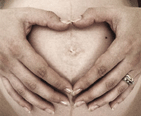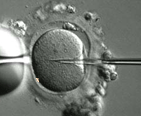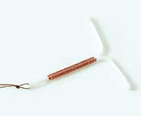People usually associate this word with the white wedding dress and innocence. However, today it is not as important and widespread as it used to be. To put it in a term, a girl is a virgin until the moment she has sex for the first time.
Losing virginity
 The process of losing virginity is explained clearly from the physiological point of view. During the first sexual intercourse the hymen or a membrane is physically torn. A hymen is a part of vulva and it in a way closes the entrance to vagina. Therefore, after the first time penis goes into vagina and membrane is torn woman is considered not a virgin any more. However, the absence of hymen doesn’t necessary mean that women had sex already. It can happen that woman was born without it or the hymen disappeared itself during the lifetime. Women can also loose hymen in the process of exercising or using a tampon. It is also possible the women can have very thick membrane. In this case, she needs surgical cutting or total removal of hymen.
The process of losing virginity is explained clearly from the physiological point of view. During the first sexual intercourse the hymen or a membrane is physically torn. A hymen is a part of vulva and it in a way closes the entrance to vagina. Therefore, after the first time penis goes into vagina and membrane is torn woman is considered not a virgin any more. However, the absence of hymen doesn’t necessary mean that women had sex already. It can happen that woman was born without it or the hymen disappeared itself during the lifetime. Women can also loose hymen in the process of exercising or using a tampon. It is also possible the women can have very thick membrane. In this case, she needs surgical cutting or total removal of hymen.
Second virginity
Some people wish to get back their virginity. Therefore, they choose to become virgins for the second time. They succeed achieving this by abstaining from sex . Some choose to do it for several month, others needs years while third category of these people choose to have sex only after marriage.
People decide to renew virginity for several reasons. Firstly, it can happen that you had your first sexual intercourse too early. Despite of this fact, person wants to have normal further sexual life and tries convincing itself and a new partner about being virgin. Secondly, many people consider virginity being a symbol of power – the physical and mental power to control your body. We can also look at the etymology of this word. The origin comes from old Greek word ‘Virgo’ that associates with the ancient goodness of power. Finally, it can happen that you lost your virginity because of the rape or any other kind of pressured sex. It is normal that you still want to have your real first time with the person you love.
Men virginity
From the medical point of view, we can indicate if the man had sex before. They have a skin, in a way similar to the women’s hymen, and they loose it during the first sexual intercourse. This piece of skin is called ‘frenulum’ and it is situated immediately below the tip on the underside of the penis. It is not a true indicator; however, absence of this piece of skin shows that man has a little or no experience in sex.
 Condoms of this brand are extremely popular and commonly used in The United States of America. Trojan brand condoms are made from latex which indicates high effectiveness and reliability in pregnancy prevention, HIV and STD. They are also easy to use and everyone can get a free sample from the website to make sure that all these facts are true. However, if we take a look to the product line, we will not find a condom under the name of “extra safe”, “ultra safe” or something similar as all the condoms are manufactured from latex combined with spermicidal lubricant. The latter diminishes the number of active sperm so the chance to get pregnant is extremely low even if sperm goes out of the condom. The most popular type is “Trojan Her Pleasure”.
Condoms of this brand are extremely popular and commonly used in The United States of America. Trojan brand condoms are made from latex which indicates high effectiveness and reliability in pregnancy prevention, HIV and STD. They are also easy to use and everyone can get a free sample from the website to make sure that all these facts are true. However, if we take a look to the product line, we will not find a condom under the name of “extra safe”, “ultra safe” or something similar as all the condoms are manufactured from latex combined with spermicidal lubricant. The latter diminishes the number of active sperm so the chance to get pregnant is extremely low even if sperm goes out of the condom. The most popular type is “Trojan Her Pleasure”. This is what the male friends, colleagues, acquaintances, and life partners of more than 45 million women worldwide are going through at least once a month: they have to deal with all possible women’s mood changes caused by anxiety, depression, cramps, heaviness and headache. They feel irritable, start crying without reason, find themselves confused, lost, clumsy, absent-minded, withdrawn, and paranoid and even have suicidal thoughts. They don’t feel beautiful and if one tries to compliment them, everything turns to another drama on the monthly basis.
This is what the male friends, colleagues, acquaintances, and life partners of more than 45 million women worldwide are going through at least once a month: they have to deal with all possible women’s mood changes caused by anxiety, depression, cramps, heaviness and headache. They feel irritable, start crying without reason, find themselves confused, lost, clumsy, absent-minded, withdrawn, and paranoid and even have suicidal thoughts. They don’t feel beautiful and if one tries to compliment them, everything turns to another drama on the monthly basis.  6.1 million of adults are infertile in the United States. One third of cases is due to female infertility, another one third accounts for male infertility, 15% of infertile cases is due to the factors of both partners and the rest is considered to be unexplained cases.
6.1 million of adults are infertile in the United States. One third of cases is due to female infertility, another one third accounts for male infertility, 15% of infertile cases is due to the factors of both partners and the rest is considered to be unexplained cases. Menopause literally means the last menstruation. Menstruation usually stops because the levels of estrogen and progesterone are so low that they are not able to stimulate endometrium and it becomes very thin and, hence, does not bleed. Usually
Menopause literally means the last menstruation. Menstruation usually stops because the levels of estrogen and progesterone are so low that they are not able to stimulate endometrium and it becomes very thin and, hence, does not bleed. Usually  Contraceptive pill is one of the most effective
Contraceptive pill is one of the most effective  Most data suggests that a woman regains fertility immediately after the removal of IUD. Some claim that pregnancy is possible after one month after the removal of this device from the uterus. Women should be aware that there are certain differences between a copper and hormonal IUD and should discuss all the pros and cons with the doctor prior to insertion of this contraceptive device into the uterus.
Most data suggests that a woman regains fertility immediately after the removal of IUD. Some claim that pregnancy is possible after one month after the removal of this device from the uterus. Women should be aware that there are certain differences between a copper and hormonal IUD and should discuss all the pros and cons with the doctor prior to insertion of this contraceptive device into the uterus.  In vitro fertilization procedure has several stages. A woman has to undergo two week long intensive preparation in order to receive several healthy eggs for the procedure. A woman will have to take hormonal preparations during this period. The doctor will know the exact time for taking the eggs from the ovaries by performing blood tests and ultrasound scan of the ovaries. The proper time to take the eggs is just before the ovulation, when the eggs are nearly ready to be fertilized.
In vitro fertilization procedure has several stages. A woman has to undergo two week long intensive preparation in order to receive several healthy eggs for the procedure. A woman will have to take hormonal preparations during this period. The doctor will know the exact time for taking the eggs from the ovaries by performing blood tests and ultrasound scan of the ovaries. The proper time to take the eggs is just before the ovulation, when the eggs are nearly ready to be fertilized.  An intrauterine device (or just IUD) becomes a very popular
An intrauterine device (or just IUD) becomes a very popular